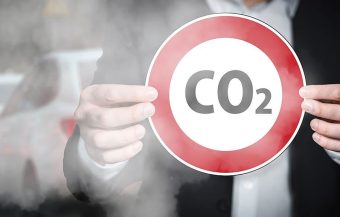
Climate change is no longer a distant threat but a daily reality shaping the business environment. From extreme weather events to shifting consumer and investor expectations, the impacts of climate change affect everyone—from small businesses to large corporations. In this context, carbon management stands out as an essential tool for responsible business operations and an opportunity for innovation, growth, and resilience. Yet, a key question often arises: what does carbon management actually entail? Is it just another bureaucratic burden, or is it the key to a sustainable future?
The European Union, a global leader in combating climate change, has introduced a series of regulations requiring companies to manage emissions responsibly. Carbon management involves systematically measuring, reducing, and neutralizing carbon dioxide and other greenhouse gas emissions that contribute to global warming. In the EU, this concept is becoming an increasingly significant requirement for businesses, particularly through regulations mandating emissions tracking, alignment with sustainability goals, and transparent reporting. At the heart of this approach lies a powerful idea: what can be measured can be managed with precision and shaped with vision.
IN FOCUS:
- Investments in Green Energy: A Step Towards Sustainable Business and Responsibility
- Nuclear Reactor – A State’s Sovereignty
- Responsibility for Sustainability: Business Practices as an Opportunity for Change
In 1992, at the United Nations Conference on Environment and Development (UNCED) in Rio de Janeiro, the United Nations Framework Convention on Climate Change (UNFCCC) was adopted, laying the foundation for a global fight against climate challenges. Five years later, the Kyoto Protocol introduced the first legally binding targets for emission reductions. In 2005, the European Union launched the European Emissions Trading System (ETS), whose ‘cap-and-trade’ principle created new investment opportunities in clean technologies and innovations. The Paris Agreement of 2015 marked the pinnacle of these efforts, setting the goal of limiting global warming to 1.5 degrees Celsius.
This historic milestone now defines business strategies, as climate responsibility is no longer just an ecological obligation but a key factor in competitiveness and long-term sustainability. In addition to the ETS, the European Green Deal, introduced in 2019, serves as the foundation for transitioning to a low-carbon economy.

The goals are ambitious: reducing emissions by at least 55 percent by 2030 and achieving climate neutrality by the middle of the 21st century. The Carbon Border Adjustment Mechanism (CBAM) was introduced to support these objectives. It prevents carbon leakage by imposing tariffs on emissions embedded in imported products from countries with weaker environmental standards.
The Carbon Border Adjustment Mechanism (CBAM), which came into effect on October 1, 2023, sets new standards for fair competition in the European market. Currently focused on emissions reporting for key industries such as cement, steel, aluminum, fertilizers, and electricity, CBAM will introduce a requirement to pay taxes based on reported emissions starting in 2026. This mechanism not only levels the playing field for producers but also pressures nonEU countries to improve their environmental standards. The essence of successfully implementing CBAM lies in precise greenhouse gas (GHG) accounting, which meticulously maps every step of the value chain— from production to transportation. For companies worldwide, this is not just a regulatory challenge but also an opportunity for innovation that redefines sustainable business practices.
Maja Petrović
The story was published in the Energy portal Magazine RESPONSIBLE BUSINESS



